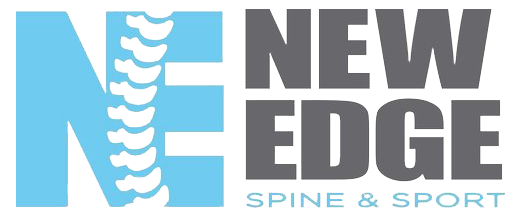The Power of Posture: Building Strength and Reducing Aches
Posture, often overlooked in the pursuit of physical fitness, holds tremendous power. Beyond its aesthetic implications, proper posture plays a vital role in building strength and reducing aches. In this blog, we'll explore the remarkable connection between posture and overall well-being, offering insights and tips on how to harness this power for a healthier, pain-free life.
The Basics of Posture
Posture refers to the alignment and positioning of your body parts, including your spine, shoulders, hips, and limbs, while sitting, standing, or moving. It's essentially the way you hold your body, and it can be categorized into two types: good posture and poor posture.
Good Posture:
Balanced Alignment: The spine is straight, with its natural curves maintained.
Engaged Core: The abdominal muscles are lightly contracted, providing stability.
Relaxed Shoulders: Shoulders are down and back, not hunched forward.
Neutral Hips and Knees: Hips and knees are in alignment with the spine and feet.
Weight Distribution: Body weight is evenly distributed on both feet.
Poor Posture:
Slouched or Rounded Back: The spine is curved unnaturally.
Weak Core: Lack of engagement in core muscles.
Forward Head: Head juts forward from the neck.
Rounded Shoulders: Shoulders slump forward.
Uneven Weight Distribution: Most weight rests on one leg or side of the body.
The Impact of Posture on Strength
1. Core Strength
A strong core is the foundation of good posture. When you maintain proper posture, you naturally engage your core muscles. This engagement not only improves your posture but also strengthens your abdominal and back muscles over time. A strong core contributes to better balance and stability, enhancing your ability to perform various physical activities, from lifting weights to running marathons.
2. Muscle Imbalance
Poor posture can lead to muscle imbalances. When certain muscle groups are constantly overstressed due to bad posture, they become overactive and tight, while others weaken from lack of use. These imbalances can hinder your overall strength and flexibility, making you more susceptible to injuries.
3. Breathing and Lung Capacity
Posture also affects your lung capacity and breathing. When you slouch or have a forward head posture, your lungs have less room to expand fully. This can result in shallow breathing, reducing oxygen intake and overall endurance during physical activities. Maintaining good posture ensures your lungs have the space they need for optimal oxygen exchange, vital for sustained physical exertion.
Posture's Role in Reducing Aches
1. Spine Health
Proper posture supports the natural curvature of your spine. When you maintain this alignment, you reduce the risk of spinal conditions such as herniated discs and sciatica. Good posture can alleviate existing back pain and prevent chronic issues from developing.
2. Neck and Shoulder Pain
Posture significantly influences neck and shoulder pain. Forward head posture, common in this digital age, places excess strain on the neck and upper back muscles, leading to discomfort and potential long-term pain. Correcting your posture can relieve this strain and decrease aches in these areas.
3. Joint Health
Posture is intimately linked to joint health. Poor posture can exacerbate joint problems like osteoarthritis by unevenly distributing the body's weight. Proper alignment, on the other hand, minimizes stress on joints, promoting longevity and reducing the likelihood of joint-related pain.
Tips for Improving Posture
Now that we understand the importance of posture in building strength and reducing aches, let's explore some practical tips for maintaining good posture:
1. Be Mindful
Awareness is the first step to improving posture. Regularly check in with your body and notice when you're slouching or hunching over. Make a conscious effort to stand and sit up straight.
2. Ergonomics
Set up your work and living spaces ergonomically. Ensure your desk, chair, and computer are positioned to support good posture. Use a lumbar roll or cushion to support the natural curve of your lower back.
3. Stretch and Strengthen
Incorporate exercises that strengthen your core and back muscles into your fitness routine. Yoga, Pilates, and specific core workouts can be particularly beneficial.
4. Breaks and Movement
Avoid prolonged periods of sitting or standing. Take regular breaks to move, stretch, and readjust your posture. Simple stretches like chin tucks and shoulder rolls can help relieve tension.
5. Footwear
Choose supportive footwear that promotes proper alignment. High heels and unsupportive shoes can affect your posture negatively.
6. Consult a Professional
Consider consulting a rehab chiropractor who specializes in this type of issue. They can provide personalized guidance and exercises to improve your posture.
Conclusion
The power of posture in building strength and reducing aches cannot be overstated. By consciously maintaining good posture and addressing any existing postural issues, you can enhance your physical strength, prevent injuries, and enjoy a pain-free, active lifestyle. Incorporate these tips into your daily routine, and watch as the benefits of proper posture transform your life.
For more questions, click the link below to reach out to our team. It’s never a bad idea to seek help from an expert!
https://keap.page/lrv668/link-bio-page.html
